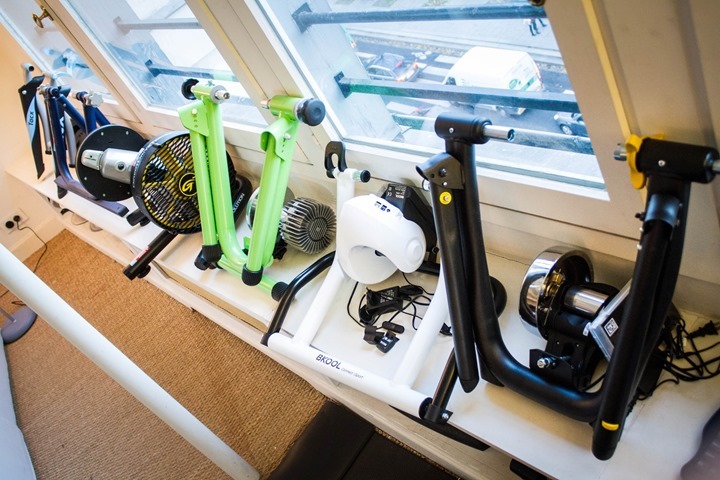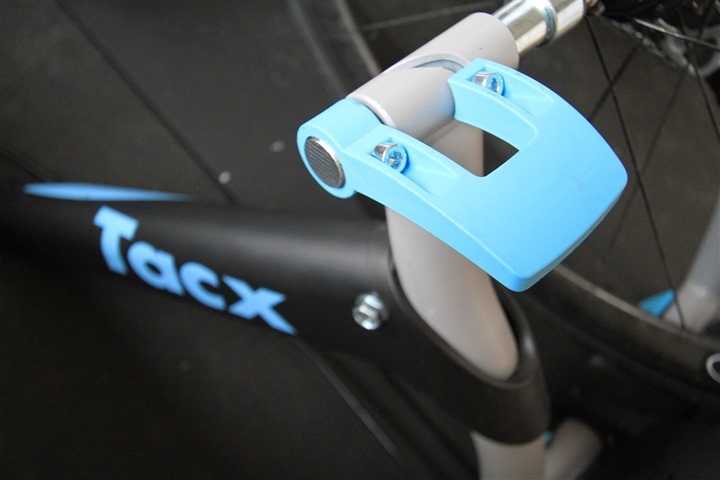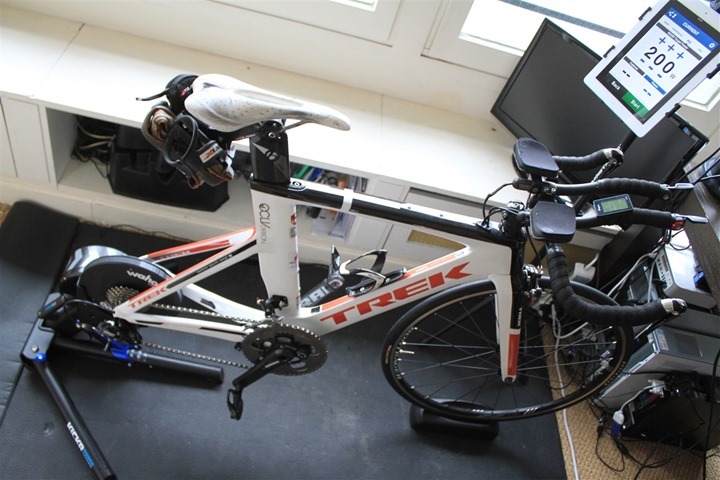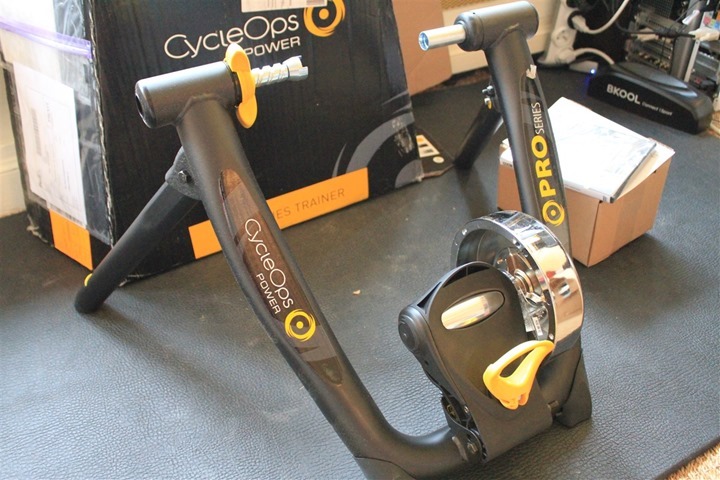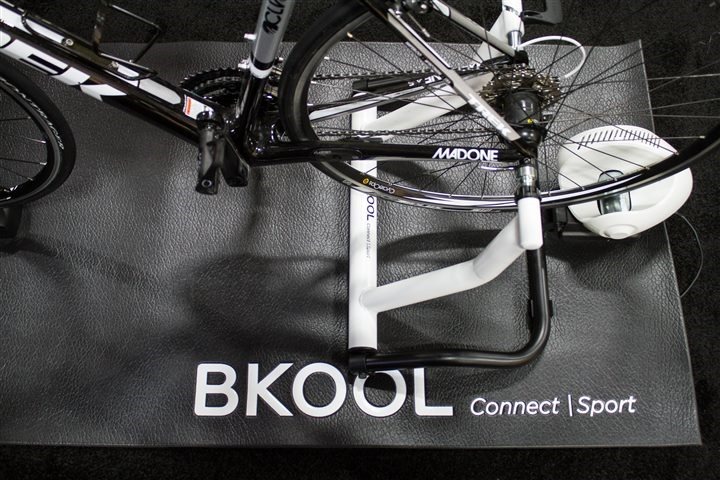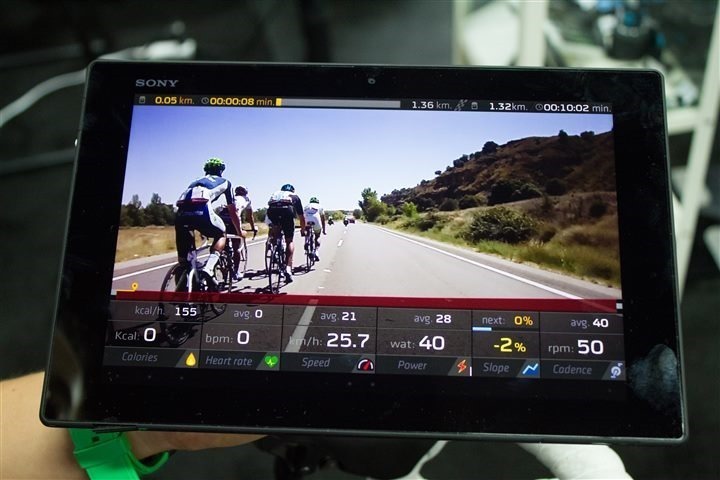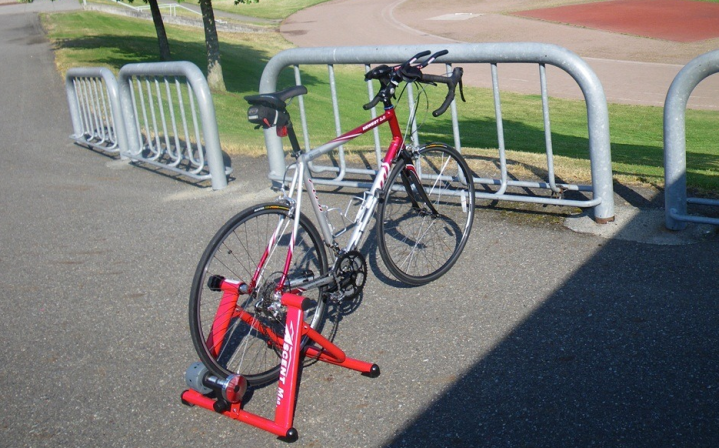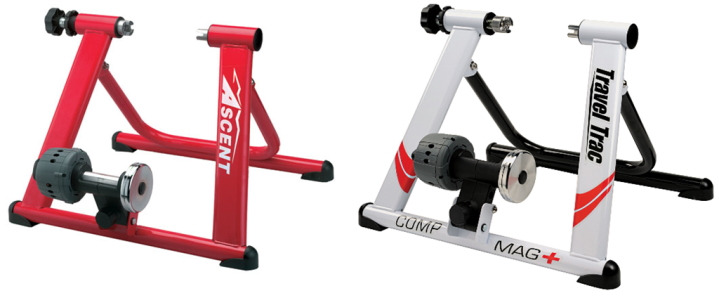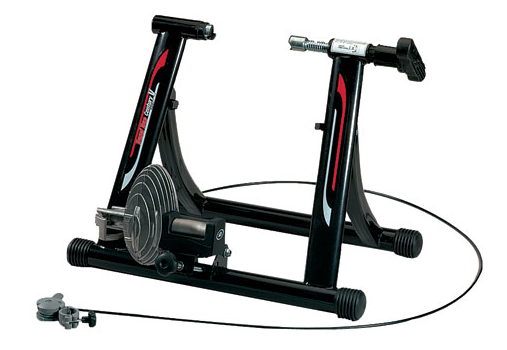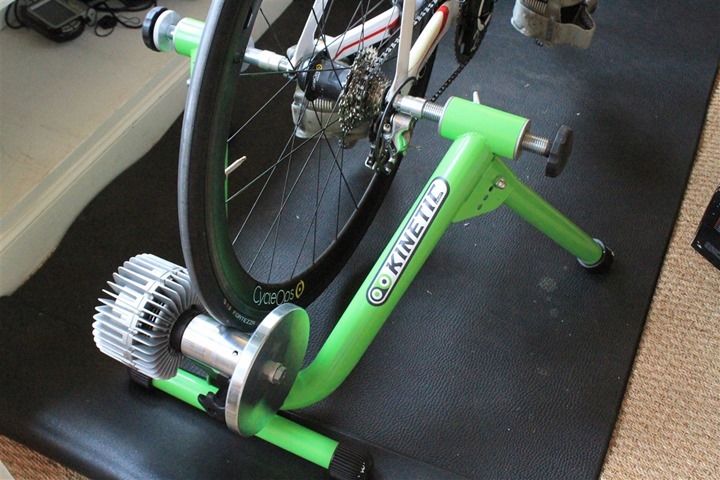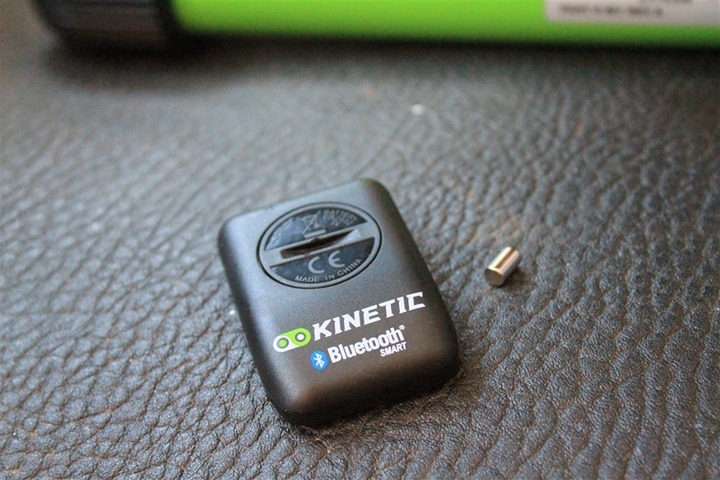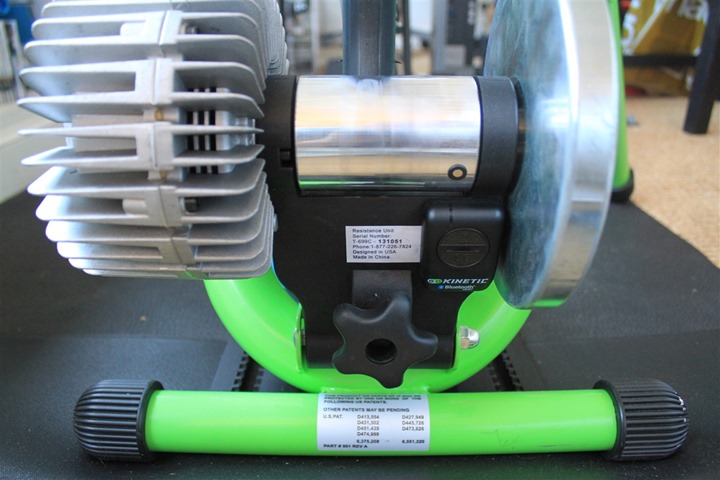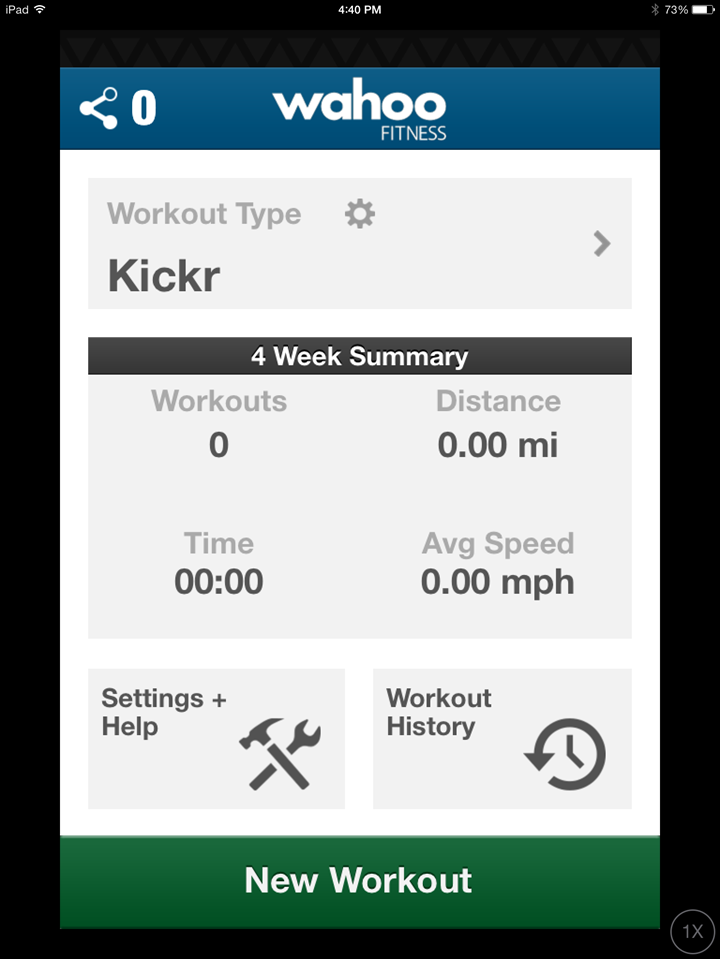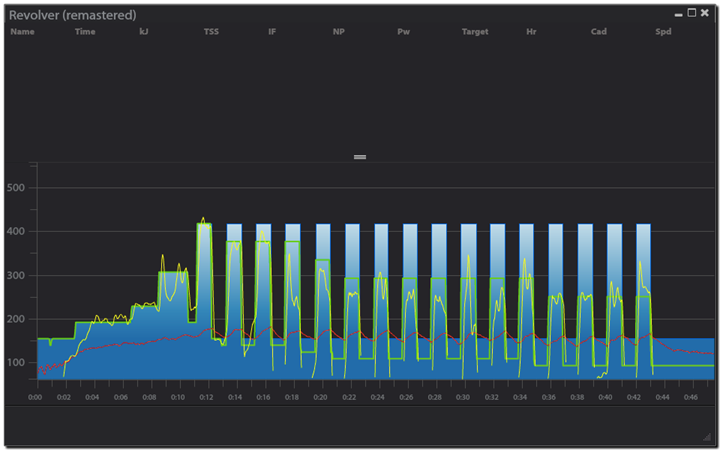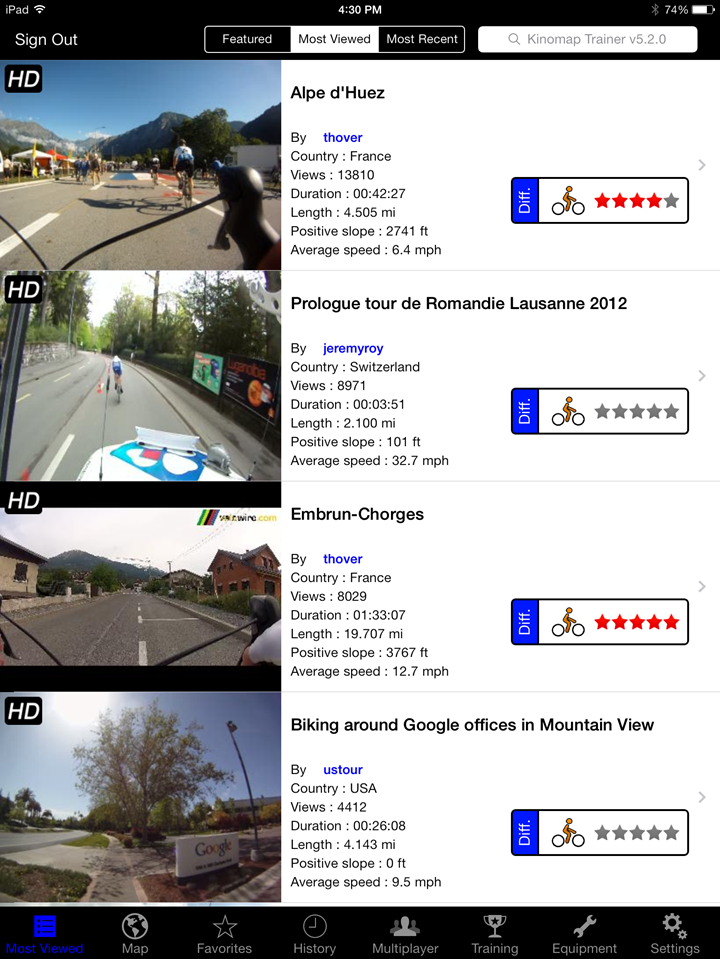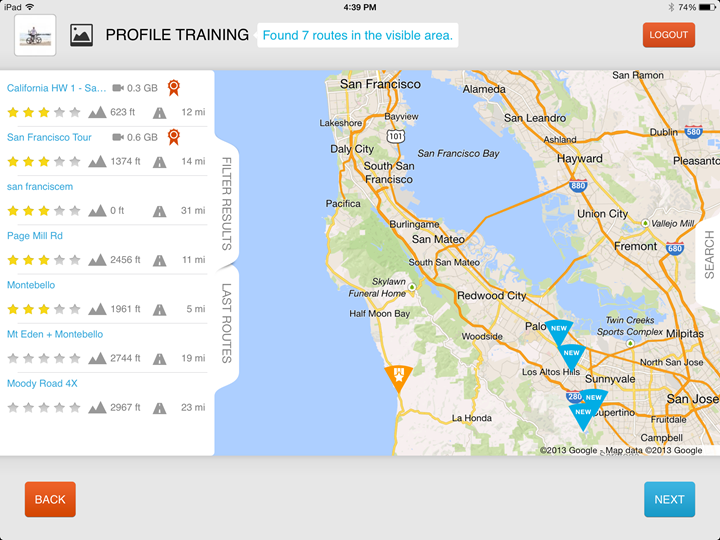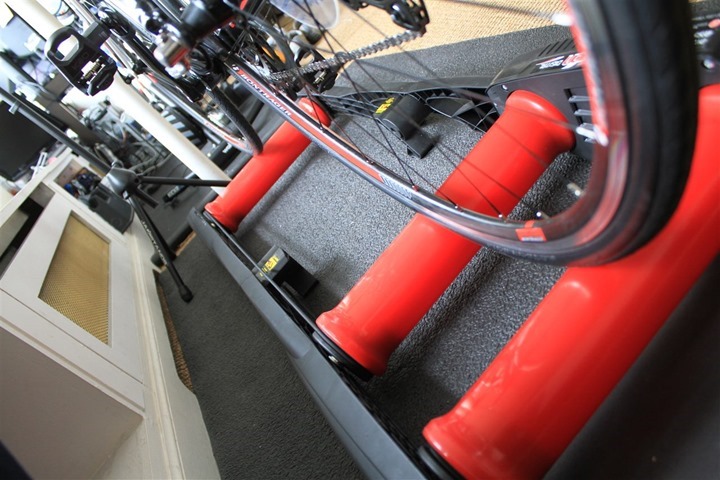It’s that time of year again – trainer season. At least for us poor saps up in the Northern Hemisphere (no, you don’t count if you live in the Caribbean). I started doing the Trainer Recommendations post last year, and I know many of you were looking for an updated version for this season. There’s been a ton of movement in the trainer market over the last year, though I predict you’re going to see substantially more change over the next 6-8 months. Thankfully, most of that change is actually coming by way of software and updates across all units (with the ANT+ Trainer Device Profile being adopted by basically everyone except the CompuTrainer).
That shift will drive some really cool software solutions – which we’re actually already seeing today as companies are partnering ahead of that and bandaging things together in time for this season.
Like last year’s post I’ve included a bit of background on how I make my decisions, as well as a FAQ section afterwards. Much of the background pieces are fairly similar to last year since that doesn’t much change. However, the actual recommendations sections are all new and re-written. The FAQ’s have been updated to reflect the reality of today as well, where appropriate.
Finally, for those looking for general sports technology recommendations (watches/etc…), I’ll be publishing those just ahead of the holidays – roughly the week of November 11th. There’s obviously a bunch of new devices (in particular for running) coming onto the market in the next 7-14 days, so I want to be able to include all those.
How I made my recommendations:
First and foremost, I only recommend trainers I’ve actually used. There are undoubtedly many other good trainers, great trainers even – especially in the sub-$400 range out there. But, even with some 6-8 trainers currently in my possession, I simply can’t try out every one on the market today with any reasonable level of detail or authority.
When I look at recommendations across all products I make, I try and recommend products to you in the same way that I’d do to friends and family. I keep it simple and explain exactly why I feel a given way.
I defined the price ranges to align a bit to how the products are priced competitively. For example, if I had made the price range $500-$1,000, and then an additional $1,000+ range, it would have grouped together the $650 BKOOL Trainer with the $999 PowerBeam Pro. Which wouldn’t have take into account that realistically the $999 PowerBeam competes very easily with $1,600 CompuTrainer. So, I arranged them based on how they best fit against each other. Ultimately, you can cross-compare categories if you’d like, but I think these ranges align fairly well to your price requests.
And finally, note that I tend to focus on trainers that have some element of technology in them. It’s not that I think that all non-technology trainers are the same (cause they aren’t…well…except that most are), but it’s because that’s just what I happen to review the most here.
General things to look at in a trainer:
There’s a lot of things to look for in a trainer – but some are applicable across the board from a sub-$100 unit to a $1,500 unit.
First and foremost, it needs to be sturdy. The more plastic involved, the less likely it’s going to last over time. Take for example, the CompuTrainer, otherwise known as the rock. A tank really. I’m certain I could throw that in front of a semi-truck, and it’d probably be fine. As such, those units last 10-15 years (or more). In fact, I don’t know anyone who’s ever broken a CompuTrainer frame. Some electrical components eventually wear out, but the frame is astoundingly sturdy. I find the KICKR in that same camp. It’s a beast component-wise.
Second, look at the attach point to your bike. I’ll start with the ones that leverage a skewer of some sort and don’t require removal of the wheel. In these cases, try to find one that has a ‘quick-release’ mechanism for quickly locking the trainer into place. One that doesn’t require you to endlessly spin the tightening lever and try to find an exact spot each time. See below for an example of a quick lever:
In the case of trainers that you attach your bike directly into a cassette mounted on the trainer (Muin/KICKR/Silencer/etc…), be sure that it’ll be compatible with your bike. There are only a few edge cases where this occurs (primarily higher end), but just be aware of them.
Third, look at how stable the platform is. The smaller the base of the trainer, the more likely it is to tip over (and you along with it). And while tipovers are extremely rare – they are a problem on lower end trainers ($50-$150) where the base is really small. This can be further compounded when the trainer mounts the wheel higher up – meaning a higher center of gravity. It’s not hard to get a situation where you try and reach for a TV remote control or something off to the side and fall over. None of the trainers I’m recommending have this issue, but in general, keep it in mind.
High End Trainers ($800+):
This category has many entrants – with numerous companies trying to compete for the high-end market. When I look at trainers in this range it really all comes down to technology. For the most part, the mechanics of these units are all fine. It’s the software side that moves a unit between awesome and sucky.
The key item that tends to make a high-end trainer…well…a high end trainer, is that it’s resistance controlled. Meaning that it controls the resistance on your trainer, rather than you changing gears (though, you can do that too). So it can simulate the terrain automatically, or hold a precise 225w. Your choice. All trainers in this section have this capability. The BKOOL has the capability to control resistance to match terrain/videos, but the update has not quite been released to be able to set a specific wattage (i.e. 225w).
Wahoo KICKR: $1,099
It should come as no real surprise to anyone. This topped my early recommendations list last year, and it continues to be my recommendation for a high end trainer.
The single biggest reason I recommend this trainer is the dual-protocol nature of both ANT+ and Bluetooth Smart. This means that it can communicate out to everything from Windows PC’s and your Garmin Edge over ANT+, to iPad’s and iPhone’s over Bluetooth Smart (and Android devices shortly).
Since it’s arrival on the scene we’ve seen a number of apps come out and support it, both training focused (i.e. TrainerRoad, PerfPro), and more entertainment focused (Kinomap, BullTrainer, etc…). We’ve now also seen even competitors supporting it within their software – this was done by Cycleops (with VirtualTrainer), as well as BKOOL too.
Now, there are still some snags around Android connectivity. Wahoo has been saying for a while that they’re close on releasing their app – and, to some degree I can see that. But it’s ultimately not yet here today. So in order to use the KICKR you’re going to need an iPhone/iPad/Windows PC/Mac. Initially to update the firmware once you’ll need an iPhone/iPad – but pretty much anyone can find a friend to buy a six-pack of beer and get them to spend 90 seconds to upgrade the firmware so that it’s compatible with ANT+.
Finally, Wahoo has committed (like everyone else) to upgrade to the final ANT+ Trainer Resistance profile once it’s released. Technically speaking, today they use a blend of private-ANT (control) and ANT+ (broadcast). I suspect we’ll see this get sorted out in the December-January timeframe.
To get all the details on the KICKR, check out these specific posts:
– Wahoo KICKR in-Depth Review
– Wahoo KICKR Windows App Overview
– Wahoo KICKR Segments App Overview
CylceOps PowerBeam (ANT+ variant): $999
The PowerBeam is a new entrant into my trainer recommendations list (but not a new trainer), as it didn’t quite make the cut last year. What’s changed? Well, a few things. First is that they reduced the price. Price plays a big part in recommendations. Second is that they’ve made good progress on connecting to 3rd party apps (opening up access). Since then we’ve seen TrainerRoad and Kinomap now control the PowerBeam. They’ve said they’ll give the otherwise private-control trainer keys to anyone (developers) who asks. Third – and most importantly – they’re working to adopt the more open ANT+ Trainer Control profile as soon as it’s released.
Given that last one, it means that they’re in a really solid spot once that gets adopted (for any apps not yet working with them directly).
Beyond that though, they’ve also recently released (last week) a pretty well done iPad app. I’m impressed, it’s very well designed and has connectivity beyond just their own trainers. Android is coming soon as well (they already have a PC version).
You may have noticed I specifically called out the ANT+ version above (as opposed to their planned Bluetooth Smart version). Why is that you ask? First, the BT Smart version simply isn’t out yet. That’s an immediate blocker. Second is that with Bluetooth Smart you’re limited right now to trainer control apps primarily on the iPhone/iPad/Mac, with nothing yet available on Android or PC. ANT+ doesn’t have those limitations today. Further, with the ANT+ Trainer Control profile coming up, that means that everyone software-wise will be on the same playing field there.
Now ideally we’d see CycleOps offer a combo version of both Bluetooth Smart and ANT+ (like the KICKR), but that’s not in the cards (and the unit can’t easily be upgraded). I’d go as far as saying that I’d love to see them develop some sort of re-broadcast adapter for the unit to go from ANT+ to Bluetooth Smart. In fact, they could probably partner with 4iiii’s and their Viiiiva to knock that out.
That said, there’s really nothing that’s BT-only today that doesn’t also work with an ANT+ adapter, app-wise. All of the apps I’ve mentioned can connect over ANT+ to the CycleOps unit just as well as KICKR can over Bluetooth Smart.
To get all the details on the PowerBeam, check out these specific posts:
– CycleOps PowerBeam Pro Review (a bit older, and pre-cool software)
– CycleOps Virtual Trainer Review
– A look at the CycleOps iPad App
Mid-Range Trainers ($400-$800):
Mid-range trainers continue to be an awkward category to recommend purchases in. In fact, there’s really only one unit that I’d recommend buying at this point – everything else I kinda feel you’re over-spending, or under-spending and should just get one of the ones above. Meaning that outside of the BKOOL, a lot of the options don’t really get you all that much more than cheaper units. And the more you spend, the less you get for your buck compared to just a bit higher at $999.
Almost all trainers in the $400-$800 range lack the ability to control resistance, but the BKOOL can control the resistance – which is one of the major reasons why I list it.
BKOOL Trainer (€500/$650US):
BKOOL came onto the scene a bit over a year ago with a new resistance controlled trainer at a lower price point. Instead of aiming for the high-end market concerned with the highest level of accuracy, they made some compromises and went half-way in between with a unit that both entertains and provides useful training data. Unlike most other units it actually uses your body weight to push down on the trainer resistance unit. Since their release they’ve done some good work in improving their software to address concerns I had, as well as greatly expanding distribution of the unit globally (you can convert the prices above pretty much flat-rate to other currencies).
Further, in the last month they’ve previewed their new tablet app (they showed me Android, below, but iPad is there as well) that’s coming out next year. I’d wager it’s probably the most visually well done app I’ve seen for a trainer – really slick.
Now, that helps to compensate for their not-so-awesome user interface on their desktop software. Which isn’t to say it doesn’t work, as it does. It’s just not quite as awesome.
The more important news is that they’ve actually already implemented the ANT+ Trainer Control beta profile on trainers they’ve shown off at both Interbike and the ANT+ Symposium. Which means they’re much closer to getting that support out the door than most others I’ve talked to. That’s huge, because it means that even though their tablet apps (platform agnostic) won’t be out until a warmer season, they’ll be able to work with everyone else that does have apps much sooner.
Like almost everyone else these days, BKOOL has a Netflix style streaming model for course videos (they did it first best I can tell), which means you pay a flat-rate per month for unlimited videos.
Now of course, since you’re paying almost half of what you’ll pay at the higher end, there are some compromises. The power accuracy of the unit can be a bit less accurate. Also, in out of the saddle climbing you might see some slippage because of the design were your body weight pushes down on the unit. But for many folks buying a trainer in this price range you’re probably looking more at the entertainment value (keeping you busy while staring at a white dot), than absolute accuracy on power. For the price though, you can’t beat it.
To get all the details on the BKOOL unit, check out these specific posts:
– BKOOL Trainer In-Depth Review
– BKOOL new tablet software update preview
Budget Range Trainers ($75-$400):
Virtually this entire section remains unchanged since last year. The reason is that there’s simply been no shift in units in this range that warrants me changing my recommendations.
Little Red (aka: Performance Ascent Trainer aka Performance Travel Trac Comp Mag + Trainer) – $109:
I’m going to start with the cheapest trainer I know of…and ironically, the first trainer I ever owned. Yet, it’s still the one I’d recommend to folks on a tight budget.
As noted, this was the first trainer I bought in DC, and, it’s actually still a trainer I have at my parents house in Seattle. For the vast majority of basic use cases, it works quite well. The trainer can be found only at Performance Bike (big bike superstore in the US) for generally $80-$110. If it’s not on sale this week, it will be next week (a rule of thumb at Performance Bike for everything). Though, it seems like the days of the $80 may be behind us, as the retail price of that trainer is listed at $149. Still, today it shows $109.
It does not have adjustable resistance, instead, you adjust your gearing to increase resistant. Further, I found that it maxes out at about 300 watts. For most riders, that’s not a terribly big issue. If you aren’t sure if you can output 300 watts, I’d wager a bet that you can’t. Folks that can output 300w tend to know it. I ran into issues where during certain interval sessions, I’d effectively hit the ceiling on resistance of the unit at around 280-300w. But for steady state workouts and everything other than those top-end workouts, it works great. Plus, it’s tiny and lightweight. Here you can see me using it outdoors:
Now, it used to be called the “Ascent”, but best I can tell, the “Travel Trac” is simply the new Ascent. Everything looks identical on it, just a new paint job. By the way, this is the Performance Bike house brand, so you won’t find it anywhere else. Performance bike likes to rebrand trainers all the time for reasons that defy logic. Same trainer, new name.
Like I said – same thing from what I can tell beyond a new coat of paint, and definitely the best low-budget option.
Performance Bike Travel Trac Century V Fluid Plus (~$150):
Next up is a slightly more expensive model from them that offers controllable resistance. It’s fairly basic otherwise like Little Red, but you can use the resistance control cable and lever that specifies resistance from your front handlebar. You simply wrap the cable around such that you don’t get it caught in your bike, and you’re good to go!
I used this quite often in brick workouts in DC at the track. As well as before sprint triathlons and the like. It doesn’t require any plug-in or anything, and is easy to transport.
Unlike the $109 Ascent, this one can easily handle over 300w during workouts, so there were no issues for any of my higher interval workouts. I don’t have any good individual photos of it that I can find from my stockpile, and I gave it to my neighbor before the move – but it’s still a great little trainer.
I often took this with me travelling when going by car, because it easily fit in the trunk. For example, here I took it to a ski area in West Virginia and did my workout there.
The primary reason you’d buy this trainer over the cheaper one is the resistance control (which you’d otherwise do simply by shifting gears), or because you need higher wattage resistance. That said, it seems to be missing off of Performance Bike’s site right now – so perhaps it’ll show up again. They like to constantly re-brand/re-label their trainers.
Note: While looking up the prices for the above trainer, I did notice that the CycleOps Mag+ trainer was only $20 more. While I’d guess it’s probably a better trainer (the lever is certainly better), I haven’t ridden it and thus can’t really make any recommendations one way or another.
Kinetic Kurt Road Machine – $330US:
This is an interesting trainer for a few different reasons. First, is that it’s well built. Second, is that it’s fairly stable within the power curve, and thus works well for predicting power through various apps and accessories.
And in my mind, the ONLY reason you’d pay $330 over one of the cheaper options is because you want to integrate it with a platform that provides power estimation. In this case, TrainerRoad (there are others though). They’re an online platform (with a client software that gets installed) that has workouts and integration via ANT+ to your existing devices. Grab your bike with an ANT+ speed/cadence sensor, stick it on a trainer, and then it’ll record the whole thing.
So why does this matter for the Kurt Road Machine? Well, TrainerRoad supports a concept called Virtual Power, which means that they have a known resistance curve of a given trainer (many trainers actually, listed at that link), and can then semi-reliably predict power. By semi-reliably I meant that they can generally be fairly precise, but not fairly accurate. In other words, session to session you’d get consistent numbers – but those numbers may not map to the correct wattages if measured using a direct force power meter.
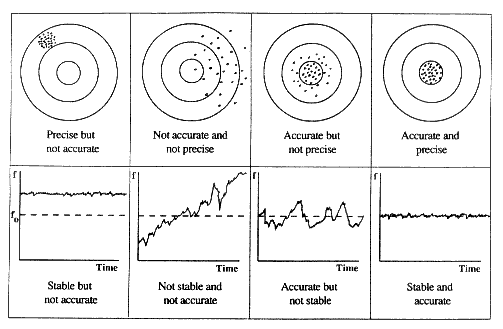
(Above: TrainerRoad would fit into the leftmost box, while a conventional direct force power meter would generally fit into the rightmost box. Btw, I can’t remember where I saved this chart from months ago – but I believe it was power meter guru Tom A., so thanks Tom! And, if it wasn’t you Tom, thanks and sorry to whomever it was!)
Take for example a rider that’s riding at a reliably measured 200w output. In this case, with a PowerTap (direct force power meter) he may show 200w day in and day out. But with Virtual Power, he may show 220w day in and day out. The key is, he’s showing the same thing each day (assuming he’s outputting the same thing of course, just an example).
Now there’s a TON of debate out there as to whether power numbers matter as long as they are consistent. I’m going to stay out of that debate. Ultimately, number accuracy only matters if you change cycling power meter measurement devices (i.e. go from TrainerRoad VP to a Power Tap). For many people, over the course of their riding career, they will likely do that. Thus, ensuring accuracy over time is important for those people.
For the purpose of being within the confines of TrainerRoad and Virtual Power, it’s not terribly important. But again, it’s up to you to determine how applicable that is to you and your use cases.
At any rate, back to the Kurt Kinetic Road Machine. This is the trainer that the TrainerRoad guys recommend as their best balance between reliability and cost. And thus, it’s the one I picked up. And therefore, after playing with it – it meets all of my standards defined earlier on in terms of reliability/stability/etc…
I will say however, that if you don’t plan to use TrainerRoad or PerfPro, then honestly I wouldn’t spend the extra cash.
Finally, in addition Kinetic last winter introduced their Kinetic inRide Bluetooth Smart device. This accessory allows you to calibrate the rolldown piece and thus get astoundingly accurate power numbers transmitted via Bluetooth Smart to your phone (or apps such as TrainerRoad).
I tested this out last winter and found it did quite well. They’ve had some bobbles in updated software releases since then, but I think that turbulence is largely past at this point. Ultimately, this is an interesting way of getting power information that is more reliable than Virtual Power (because of the roll down piece) to your computer or phone for recording.
Now, the only challenge here is that the device is $200, which puts you pretty darn close in price to the BKOOL trainer. So I’d probably steer more towards the BKOOL at this point if you’re planning on buying both. But if you already have one of the compatible Kinetic trainers – then definitely pick it up.
Finally, for those curious – I don’t have much experience beyond a few test rides with the Rock & Roll variant. So I can’t say it’d be worth it one way or the other. Sorry!
Here’s the relevant review for the Kinetic pieces:
– Kinetic inRide Bluetooth Smart accessory (and Kinetic Road Machine Trainer) In-Depth Review
Software Options:
Over the past roughly 10 months, software has become such a big part of high-end trainers. In fact, I’d argue software compatibility has become even more important than the actual trainers themselves. There’s a lot of options out there, and one has to understand that no single piece of software does everything.
They tend to be grouped into two major areas:
– Training Focused
– Entertainment Focused
The first category – Training Focused– is primarily aimed at keeping you on target for a given wattage/threshold/etc, rather than trying to distract you with a video of a course or similar. For many folks, this is distraction enough and it works just fine.
Whereas the second category – Entertainement Focused – tends to be around recreating an experience. For example, riding a course with a video, or re-riding a Strava segment.
There’s no ‘right’ answer here. Different people like to train to different things. For me personally, I prefer the first category. Give me a wattage number to hit and I’ll go and zone out for a while, putting me mostly in a ‘just get it done’ perspective. Whereas many others simply prefer something more visual to make the time go by.
That said, here’s what I’d recommend others take a peak at.
Training Focused:
Remember that as I noted, this is just what I recommend and use repeatedly. There are others beyond this that you can check out, like PerfPro and Peripedal.
Default Wahoo Fitness App
This is actually my go-to app for all the time I spend on the KICKR. It records data consistently and reliably, and then uploads it to just about every web service and file format I could want. It’s got plenty of screens (though, I wish I could customize them more), and has lots of options for choosing which sensors your data comes from. And it supports every kind of ANT+ and Bluetooth Smart sensor (Heart Rate Straps, Speed/Cadence Sensors, Power Meters, etc…).
Oh, and it’s free. Today it’s available on the iPhone/iPad/iPod, but it’s coming shortly to Android devices.
TrainerRoad
When I’m not using the default app, then I’m likely using TrainerRoad. I’ve been using it a lot more lately since they’ve introduced their Power Relay options, which automatically transmits the TrainerRoad power data out as ANT+ power (so your bike computer can record it). This helps to make the CompuTrainer much more integrated, as well as helps with non-controlled trainers that the app can work with (many many many trainers). That way you can take a $200 trainer and broadcast out Virtual Power to any ANT+ device that can record power.
They also have tons of free training plans and workouts built in, though I tend to just go freestyle and follow my own plans/workouts.
Their model is subscription based, and starts at $10/month. It’s available on Mac & PC.
Entertainment Focused:
There’s quite a few options within the entertainment focused space. Some of them have just come out, and some have been around a bit longer.
Kinomap (iPad)
Perhaps the first iPad app out there to display training courses and allow you to re-ride them, they’ve done a lot of great work over the past month coming up on their update which should be out any day now. The app allows you to pick a course from around the world and then ride the corresponding video. They’ve also got a tool that allows you to upload your own action cam + GPS footage and ride/share that as well. Their updated toolset streamlines that significantly, and over the past few weeks they’ve begun cleaning up some of the elevation issues that some courses have with an elevation correction algorithm. Over time, this will be done against all courses.
Their model is subscription based, and starts at $7/month. It’s currently only available on AppStore. It’s compatible with the Wahoo KICKR, CycleOps PowerBeam and will also be compatible with all upcoming ANT+ Trainer Control trainers (i.e. BKOOL, etc…).
CycleOps Virtual Trainer (iPad or Desktop)
CycleOps has made great strides with their Virtual Training suite, now branching out into the iPad segment as well (with Android on the way). While the suite is actually made by a 3rd party company, there’s a fair bit of involvement from CycleOps in it.
The suite allows you to not only follow course videos like Kinomap, but to also create training rides quickly and easy that more closely align to the software apps listed up above in the ‘Training Focused’ area.
Their model is subscription based and starts at $5/month. It’s available for Windows & iOS devices today. It’s compatible with the Wahoo KICKR, CycleOps PowerBeam and will also be compatible with all upcoming ANT+ Trainer Control trainers (i.e. BKOOL, etc…). Additionally, it can connect to ANT+/Bluetooth Smart power meters.
Trainer Q&A/FAQ:
Most of this is from last year, but I wanted to repeat it for this year. I’ve tweaked things where appropriate and/or where they’ve changed.
What about trainer tires?
I commented on trainer tires a while back in a Weekly Mailbag post, so here’s what I said then – which still applies today.
I train everyday on the stock wheels and tires that came with the bike. Just normal tires and normal wheels. In fact, I don’t even bother to swap out for a separate trainer tire. Why? Well, my thinking is that I spend 3+ days a week on a trainer, and the last thing I want to deal with is swapping tires or wheels every time I go inside to outside or the inverse (I’m kinda lazy that way). Further, when you step back and look at the total cost of triathlon or cycling, and the total cost of simply getting a new tire each year due to wear – the new tire is pretty low (between $30-45).
Now, if you’re riding race wheels with expensive race tires – you’ll have to balance the much higher cost of most race tires.
Do trainer tires make it quieter?
Nope, actually, not at all. And I proved this as part of my Tacx Genius review – they actually make it louder. I’ve then further confirmed this with a few other tire companies as well. Most of them kinda silently laugh at the fact that people buy actually buy expensive trainer tires. Hint: Just use last seasons tire and toss it at the end of the winter.
Why didn’t you recommend XYZ trainer or software instead? It’s way better!
As noted above, it’s likely because I haven’t used it. I’m pretty strict in that I don’t recommend things I haven’t used or know a lot about. I know magazines love to, but I don’t. Sorry!
Why aren’t you recommending the CompuTrainer? And what about RacerMate One?
I’ve bought two CompuTrainers myself, and still use them. But at this point, I can’t justify recommending the purchase of a full-price CompuTrainer to anyone. Perhaps used at a solid discount, but not full price. Ultimately, I feel their RacerMate One software isn’t competitive in the market place today, nor what’s coming down the road with 3rd party apps for platforms like KICKR. At $1,640US, it’s the most expensive consumer trainer out there, yet aside from SpinScan, has less functionality and features than everything else. And SpinScan really isn’t super-useful for the majority of folks (I do understand a small number of folks like it of course).
What if I get the CompuTrainer used, what’s a good price?
Well, software suites like PerfPro and TrainerRoad have really breathed new life into the units – making them function in a much more digital world than the CompuTrainer wants to operate in.
So with that in mind, I wouldn’t spend more than about $700 on a CompuTrainer. The reason being that the CycleOps PowerBeam Pro sits at $999 (before any discounts), and can be controlled by many apps today. Further, they’ve committed to deploying the ANT+ Trainer Profile spec as soon as it’s done (again, CompuTrainer won’t do that). Which means you’re paying roughly $200-$250 more to futureproof yourself.
What about the LeMond Revolution Pro Trainer?
This story is complex, but here’s the short version: They built a trainer, people bought it, then they sold off the entire company except the trainer division (but still let everyone go), then they started up a new company focusing on new things – including trainers and bikes again. No new trainers have come out of it. (Note: Read the much longer version in this post here.)
Now, I think that the LeMond Revolution Pro is an excellent unit when it comes to feel. However, the noise totally overshadows that (it’s the loudest on the market by a substantial margin). Further, the technology side of the unit is really bad compared to the rest of the units on the market – especially at that price point.
They’ve said they’re looking to address it – but I can’t seem to get any update from them on it (I e-mailed multiple times over the past month, and apparently all the people I know have left yet again – or the company just doesn’t read e-mail anymore). Perhaps some day we’ll get some consistency out of them with an awesome product.
Any tips or suggestions on where to place remote controls/jelly beans/bike computers/etc while on a trainer?
Yup, you’re in luck. I’d recommend either a simple 4-cup OXO measuring cup (silly, I know, but clips onto almost all road bike bars and triathlon bike aerobars – awesome). Or, you can build your own like I did here in this post.
Do you use a trainer pad/mat (floor protector)?
Yup, it’s just a generic one I picked up at Performance Bike way back when. You can find endless numbers of them online or at your local bike shop – usually around $30. You can also just use a towel, just be sure that if you’re on carpet that you change the towel regularly, otherwise it’ll eventually stain the carpet below (sweat going down into it). Here’s the thing, don’t overspend on this – that’s silly. You don’t need a $70 trainer mat. As long as it’s waterproof (thus, sweatproof) and offers some padding to lower sound profiles, that’s really the key thing.
What’s the quietest trainer?
So I did a lot of testing on this a few weeks ago. Each trainer, multiple iterations, videos, differing speeds (which is what control sound levels on trainers, not resistance/wattage) – and did them all in front of a decibel meter (measures sound). I think I did them for three hours in total. I suspect my poor neighbors below thought civil war had broken out above their heads.
But here’s the thing: They’re all within about 1db of each other at their peaks (and about the same across the rest of the profile). Well, except the LeMond Revolution – which was 20db higher and topped out at 100db, which is literally the same as a jet engine. No joke. Of course, everyone knows it sounds like a jet engine – but this literally proved it.
What about the super-quiet new Elite Muin or CycleOps Silencer?
Well, the Elite Muin is legit-crazy-quiet. Scary quiet. But it’s also a wee bit expensive for the technology it has (it doesn’t transmit power openly, only to their app). I had in fact delayed this entire post purely because one of the Muin’s was supposed to arrive earlier this week for me to test. It has not arrived.
So it’s hard for me to comment on that without use beyond a trade-show floor (which again, was impressive on the noise side).
For the Silencer, it’s sorta in the same bucket as the Muin, except without any sort of transmission of metrics (and only a touch bit cheaper). It’s also somewhat louder than the Muin. You can see a video of it that I took last week at the end of this post.
What about rollers, any thoughts?
I don’t have a ton of experience on rollers. I’ve been recently testing the Elite Arion Digital ANT+ rollers however, and have been getting more than my fill of near-death experiences.
I had hoped that the review would be out yesterday, but I’m awaiting some answers to a few questions I had. In any event, I find that the cross-over between people who really like riding rollers and the people who really like the technology aspect tends to be rather small. Said differently, roller people tend to be more purists who don’t want technology in the way (not all of course, but most). The Elite unit is good, but it’s also pricey for what you get. I haven’t tried others beyond that.
Why did the Bushido get cut from the recommendations this year?
One reason: The TTS4 software suite.
I became frustrated with the software suite even more during my Genius review last winter, and then that’s been compounded with continually recurring problems every time I use the Bushido at my Dad’s house as well. At this point, it’s just too buggy.
Now, with their recent iPad app release – I’m seeing some positive things. It just came out a couple of weeks ago and things look good. But I haven’t had enough time to use it with any depth, and beyond that from the feedback I’m getting from many of you it’s still going through some teething bugs.
Finally, while they’ve said they’ll be adopting the ANT+ Trainer Control profile, I’m getting some mixed signals there a bit. So I want to see that chicken hatch before planning a rotisserie for dinner.
That said, fast forward to next spring and I’m optimistic they’ll have that sorted out.
What about one of those bike protective thong cover things?
No, sorry, I don’t cover up my bike. I’ve spent a A LOT of time on my bike, pouring a lot of sweat – many multi-hour rides. But you know what? I’ve never seen any adverse issues due to it. Perhaps I’m lucky, perhaps it’s not normal. Either way, I don’t use one.
Do you use a trainer block? Which one do you recommend?
Yup, I have a couple floating around. In general, don’t go overboard here. Pickup something cheap and call it a day. I’ve got the CycleOps climbing block – which is somewhat handy in that it has basically multiple levels on it. I don’t use that for climbing per say, but just to handle differences in the different trainer heights. It’s $23. But there are other cheaper ones that start at about $11. Most of those are fine (I have a few of those too). Just be sure it can support your weight.
Product Comparison Tables
Still can’t decide which trainer? Well, no worries, you can swing on over to the product comparison tool and mix and match all of the trainers I’ve written reviews for. Comparing individual features down to the uber-detail level.
Relevant links to support the site:
If you’re looking at any of the above devices, you can support the site by purchasing through any of the below links. Here’s a handy table of everything mentioned above that I have a review on. And remember that everything you purchase through Clever Training saves you 10% off your entire cart – so that will definitely help in some of the trainers cases. You’ll use coupon code DCR10BTF, and you’ll also get free US shipping for all items over $75.
| Product | Amazon | |
|---|---|---|
 | BKOOL Trainer €500/$650 | Amazon |
| CycleOps PowerBeam Pro $799 | Amazon | |
 | Kurt Road Machine (with inRide) $199 + $340 | Amazon |
 | Wahoo Fitness KICKR V1/2013 $1,199 | Amazon |
Thanks for reading! And feel free to drop any questions below, I’ll be happy to answer them.

